Starting in March, education leaders have been working furiously to create a school experience that must satisfy a dizzying list of public health, education, economic, and labor concerns. Now that classes have begun, educators face the daunting task of making up lost ground from COVID-19-related learning loss, which hit low-income students and students of color particularly hard, against the backdrop of high-profile police violence and anti-Black racism. Students are being asked to learn in an atmosphere of prolonged stress and anxiety, often through a Zoom call or a plexiglass partition. In a situation like the one we all face, how can educators possibly meet students’ needs?
Our new report, “How to Meet Students’ Social-Emotional and Academic Needs When Schools Reopen,” adds to existing research in ways that are timely and relevant for educators embarking on a new and unconventional school year. In the report, we tracked indicators of school culture, social-emotional competencies, and academic outcomes over time in 58 schools supported by NewSchools Venture Fund. The findings in this year’s report are consistent with those from our previous ones in 2018 and 2019, providing nuance to the research on the interdependence between students’ social-emotional and academic learning.
We found that though the pandemic has complicated how schools address students’ social-emotional needs, some have adapted their models to provide for them in a remote or hybrid setting. Their willingness to innovate can help other schools explore and implement similar practices. Here are our four key findings—along with questions for school and system leaders to consider.
1. Students who feel physically and emotionally safe tend to do better academically
For three years in a row, our research has shown that feeling physically and emotionally safe in school is the strongest factor correlated with academic performance.
All seven school culture factors that we measure (such as student engagement and student-teacher relationships) have an effect on social-emotional learning. However, student safety is the only one with a statistically significant positive effect on academic outcomes after controlling for students’ social-emotional competencies. When students rate their school highly on our safety scale, we estimate the difference in their academic performance to be similar to moving from the 50th to the 56th percentile on nationally normed assessments.
Clearly, a lot of attention has been paid to keeping students safe from the coronavirus, whether that means keeping them at home or reconfiguring their classrooms, overhauling class schedules, upgrading ventilation systems, providing hand-washing stations, and giving out face coverings. Emotional safety is equally important and must be cultivated regardless of the mode of instruction.
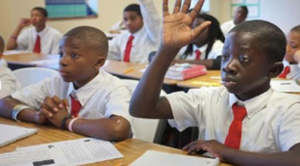 Students at Statesmen Preparatory Academy for Boys in Washington D.C.
Students at Statesmen Preparatory Academy for Boys in Washington D.C.
At Statesmen Preparatory Academy for Boys in Washington D.C., establishing warm, caring, and trusted relationships is central to their model so that students feel emotionally safe and know that they belong. When adults see behaviors that are not aligned with the school’s core values, their first response is to tell a student, “You belong to me; you are not going to get suspended; you are not going to leave school.” They then work out agreements for what to do differently moving forward. Students participate in a daily advisory session where they learn social-emotional skills. And both students and teachers participate in morning and end-of-day check-ins on how they are feeling and whether they have what they need for learning. The school provides mental health support for its teaching staff, predominantly Black men, through Georgetown University, so they can process their own trauma to better support students.
When Statesmen moved to distance learning in March, the team immediately focused on maintaining strong relationships with students. They mapped which faculty member had the strongest connection with each student and assigned every staff member five students to check in with during planned advisory sessions and by phone. Every student had at least two touch points daily from a staff member. The full school community continued to come together online twice each day for morning meetings and end-of-day check-ins, just as they did before the pandemic. Over 95 percent of students logged into learning activities every day during distance learning.
In creating a sense of physical and emotional safety for students (and staff), school and system leaders should ask themselves:
- How have you communicated with students and their families about your plan to keep them physically and emotionally safe? How might you create opportunities to hear and respond to feedback from students and families about the plan and how it is working?
- Does your school already have support groups and counseling services available on campus? If not, how might you create them as part of your reopening plan? If so, did your students access these resources and trust the adults who administer them before the transition to distance learning? If not, how might you strengthen them going forward?
- How might you gather student perceptions of safety and monitor changes in this data over time? How will your team respond to trends in the data?
2. When students believe their abilities and skills can grow with effort, they are more likely to have higher learning outcomes
Getting better at something—whether playing the piano or learning biochemistry—requires persistent, focused practice. Students are more likely to stay motivated and persist in their learning when they believe their knowledge and skills can improve with effort and that mistakes are a learning opportunity, not a sign of failure. Our findings this year reinforced the importance of a growth mindset. We estimate that students with well-developed perceptions of their own growth mindset experience a difference in academic outcomes similar to moving from the 50th to the 63rd percentile on nationally normed assessments. The magnitude of this finding is large enough that the What Works Clearinghouse run by the Institute for Education Sciences would consider it “substantively important.”
At a time when it’s easy for students to blame themselves for struggling to progress academically amid the chaos of the last six months, establishing and maintaining a growth mindset is critical. There will certainly be mistakes and setbacks as schools and teachers try new ways of teaching and students attempt new ways of learning. Framing these as opportunities to solve problems and persist through adversity is the stuff the growth mindset is made of.
Comp Sci High in the South Bronx works explicitly to develop students’ growth mindset by helping them to process the external factors that could make them doubt their own abilities. For instance, this year, the entire ninth-grade orientation aimed to help students process the effects of the pandemic and understand why school needs to look so different this year. Then, teachers moved to lessons that helped kids identify long-term goals, see the connection between this school year and those goals, and understand how they will become more independent and self-driven this year to meet their short- and long-term goals. All of this culminated in a round of parent-student-teacher conferences where students presented their vision for the year to their advisor and their caregivers. Throughout this process, teachers try to help students see setbacks and challenges as inevitable; developing responses to them is part of the learning process.
School and system leaders should ask themselves:
- How might you support teachers to try out and evaluate evidence-informed classroom interventions and practices for fostering a growth mindset?
- What steps can you take to create an environment in which teachers feel comfortable reflecting on aspects of their instruction that might inhibit students’ development of a growth mindset?
- Have you adopted a common framework to help educators understand growth mindset through an equity lens?
3. Students who develop ways to cope with stress, emotions, feelings, and behaviors in different situations are likely to do better academically
Learning to cope with stress is a normal part of healthy development. But excessive, prolonged stress can be debilitating. With so many students of color handling high levels of stress created by the perfect storm of COVID-19 and persistent racism, it’s more important than ever that schools help them develop ways to cope with their own stress, emotions, feelings, and behaviors. In our schools, students’ perceptions of their self-management skills are associated with higher math and reading outcomes. Our analysis shows that when students rate them highly, the difference in their learning is similar to moving from the 50th to the 59th percentile on nationally normed assessments of reading and math.
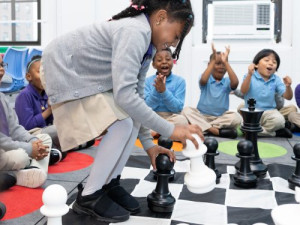 Students at a Zeta charter school in the Bronx, New York City.
Students at a Zeta charter school in the Bronx, New York City.
At Zeta Charter Schools, a network currently serving early elementary students in New York City, teachers conduct lessons on social-emotional learning twice a week and students share how they have lived these lessons each Friday during circle time. The first lesson of the year is focused on “how to identify your feelings,” based on the belief that if students are unable to identify and name their feelings, they will not know how to respond to them appropriately. Every classroom also has a “zen den” with sensory materials and other tools to support students when they need additional help coping with their emotions. Students also use “Mood Meters,” developed by the Yale Center for Emotional Intelligence, to show their teachers and fellow students how they are feeling, which they can update throughout the day.
Zeta shifted to shorter daily lessons that they can apply to virtual or in-person instruction to ensure the focus on social-emotional competencies does not get deprioritized in different scenarios.
In helping students to develop coping mechanisms, school and system leaders should ask themselves:
- How might you encourage practices that help students identify and verbalize their feelings and emotions and develop multiple techniques for coping with them?
- How might teachers support students in setting learning goals, developing plans for reaching them, and reflecting on their progress?
- What is your district or school’s approach to supporting those students and teachers who return to school with heightened anxiety and might need access to mental health services?
4. Two “power pairs” are associated with higher learning outcomes than any single culture factor or social-emotional competency
Our findings suggest that the relationship with academic outcomes is larger when students:
- believe their abilities and skills can grow with effort and feel physically and emotionally safe, or
- believe their abilities and skills can grow with effort and feel their teachers expect a lot from them in terms of effort, persistence, and learning.
We estimate that students who rate the power pair of growth mindset and safety highly demonstrate additional learning similar to moving from the 50th to the 67th percentile on nationally normed assessments. Similarly, students who rate the power pair of growth mindset and rigorous expectations highly demonstrate a boost in learning outcomes that we estimate to be similar to moving from the 50th to the 66th percentile on nationally normed assessments.
Research is illuminating which specific school culture factors and social-emotional competencies will accelerate academic success. Knowing what they are and seeing how they can be integrated into instruction can help educators focus their limited time, energy, and resources on creating learning environments that support the many dimensions students bring with them to school—a goal made even more important by the public health crisis and current events that we’re all living through.


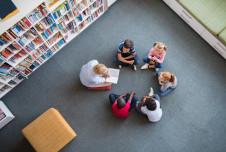

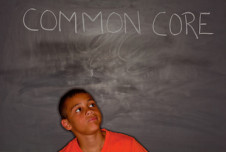
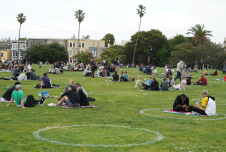


Comments